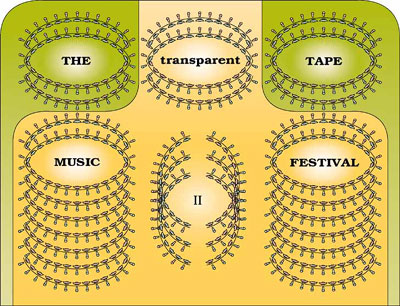Sculptor (2001) 3'14"
The source material of Sculptor was a monaural percussion track by the
group Tortoise, sent to me for processing in August 2000 by John
McEntire. I granulated and filtered the material by means of custom
software (my constant-Q granulator), which disintegrated the beating
drums into a torrent of sound particles scattered across the stereo
field. Beginning with this turbulent sound mass, I articulated the
internal morphologies and implied causalities within the current of
particles. This meant shaping the river of particle densities, squeezing
and stretching the amplitudes of individual particles and particle
clouds, carving connected and disconnected frequency zones, and twisting
the spatial flow. Over months of intermittent editing on different time
scales, I was able to sculpt this material into its final form. The
composition was completed in July 2001 in Santa Barbara.
Curtis Roads
teaches electronic music composition at the University of
California, Santa Barbara. Many of his compositions feature granular and
pulsar synthesis, methods he implemented for synthesizing sound from
acoustical particles. His synthesis program Cloud Generator is widely
distributed. Together with Alberto de Campo, he recently developed a new
program for particle synthesis called PulsarGenerator. They also
developed the Creatovox, a new digital synthesizer for expressive
performance of particle synthesis. Recent books include the textbook The
Computer Music Tutorial (1996, MIT Press), Musical Signal Processing
(coeditor, 1997, Swets and Zeitlinger), L'audionumérique (1999, Éditions
Dunod), and Konpyu-ta Ongaku - Rekishi Tekunoroji A-to (2001, Denki
Daigaku Shuppan). His latest book, Microsound (2002, The MIT Press),
explores the aesthetics and techniques of composition with acoustic
particles. His music appears on CDs produced by the MIT Media Lab, OR,
WDR, Mode, and Wergo.

